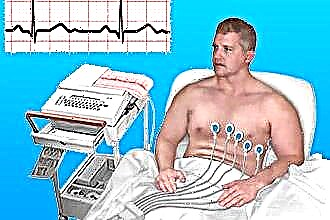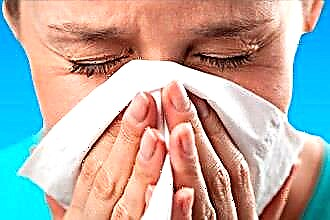Catarrhal rhinosinusitis is a respiratory disease in which there is severe inflammation of the mucous membranes (catarrh) in the nasal cavity and one or more paranasal sinuses. In the acute stage, the disease is not dangerous and is quite easily cured, mostly even without the use of antibiotics. But neglected sinusitis can lead to the development of serious complications.
Features of rhinosinusitis
Rhinosinusitis is a combined word. Rhinitis is, simply put, a common runny nose, which most often appears with a cold or ARVI. Sinus medics  They call the paranasal sinuses, which are formed by the bones of the skull and have certain functions: they are responsible for articulation, warm the air, etc. Qatar is an acute inflammatory process.
They call the paranasal sinuses, which are formed by the bones of the skull and have certain functions: they are responsible for articulation, warm the air, etc. Qatar is an acute inflammatory process.
Since there are four types of paranasal sinuses in humans, there are exactly the same number of disease groups:
- catarrhal sinusitis;
- catarrhal frontitis;
- catarrhal ethmoiditis;
- catarrhal sphenoiditis.
The peculiarity of rhinosinusitis is such that inflammation easily passes from one sinus to another and, thus, can quickly spread deeper, which greatly complicates the treatment.
Depending on which side of the nose is affected, rhinosinusitis can be right, left, or bilateral. When the disease spreads further, polysinusitis is diagnosed.
Symptoms of the disease
There are symptoms similar to all types of rhinusinusitis, as well as different, characteristic of a particular localization of the disease. The main symptoms indicating acute catarrhal rhinosinusitis are:
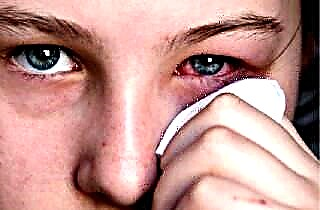 a sharp decrease in performance, weakness;
a sharp decrease in performance, weakness;- severe swelling and redness of the nasal mucosa;
- profuse mucous discharge from the nose;
- pain syndromes with clear localization;
- significant increase in body temperature;
- redness and inflammation of the conjunctiva of the eyes;
- photophobia, tearing, swelling of the eyelids;
- accumulation of mucus in the nasopharynx;
- loss of acuity or loss of smell;
- irritation of the back wall of the larynx, perspiration.
Headaches are localized in the projection area of the inflamed sinuses: inside the skull, on the forehead, on the sides of the bridge of the nose. With a complicated course of the disease, neuroses, insomnia, and sudden memory impairment are possible.
Causes of the disease
The causes of catarrhal rhinosinusitis in 90-95% of cases are viruses that enter the respiratory system and affect the mucous membranes of the nose. People with weakened immunity are most susceptible to this disease: children, pregnant women, recent trauma or surgery, with chronic or systemic diseases.
Additional provocative factors that accelerate the course of the disease and can provoke its onset are:
- frequent allergic reactions;
- too narrow nasal passages;
- exposure to external stimuli;
- atrophy and / or drying out of the mucous membranes;
- curvature of the nasal septum;
- overgrowth of adenoids and the formation of polyps;
- drug abuse;
- a constant source of infection in the nose.
Smokers get catarrhal rhinosinusitis about 5 times more often than nonsmokers. In people working in difficult conditions: hot workshops, mining and metallurgical plants, etc., frequent catarrhal rhinosinusitis is an occupational disease and gradually becomes chronic.
Diagnostics of the rhinosinusitis
 It is quite difficult to diagnose rhinosinusitis at home, since it is very similar in symptoms to ordinary flu. Therefore, most of the patients get to see a doctor when the disease has already spread deeply enough. Although at the initial stage, it may well be cured with folk remedies.
It is quite difficult to diagnose rhinosinusitis at home, since it is very similar in symptoms to ordinary flu. Therefore, most of the patients get to see a doctor when the disease has already spread deeply enough. Although at the initial stage, it may well be cured with folk remedies.
Diseases of the paranasal sinuses are managed by an otolaryngologist. To him, the first patient is usually sent, who has not coped with a cold himself. With the help of special instruments, the ENT doctor carefully examines the nasal passages and throat of the patient, also palpates the face, trying to determine the affected area primarily.
If the accumulation of fluid in the sinuses is significant, there is pain on palpation of the corresponding zones. The pain also intensifies when lowering the head down or turning sharply from side to side. If in doubt, the doctor prescribes one of the types of hardware examination: endoscopy, X-ray or computed tomography.
In order to find out how justified the use of antibacterial drugs is, if there is a suspicion of an infectious nature of the disease, which can be intensified by yellow-green thick nasal discharge, a bacterial inoculation of mucus samples is done. At the same time, the laboratory assistant checks the sensitivity of the seeded microorganisms to various groups of antibiotics. The doctor uses the results of the analysis when prescribing a course of treatment.
Traditional treatment
Hospitalization is usually not required, the patient is treated on an outpatient basis. Constant supervision of doctors is needed only with a highly complicated (sepsis, meningitis, encephalitis, etc.) course of the disease. Usually, significant improvement occurs within a few days, and the recovery period lasts up to one month, during which it is better to follow a sparing diet and avoid active physical activity.
 The most effective remedy against catarrhal rhinosinusitis are the antiviral drugs Anaferon, Nazoferon, Amizon, Amantadin and others. But they have one big drawback: they only work in the first 48 hours after the onset of symptoms. Further, their use is useless, therefore, such funds should always be at hand in a home first-aid kit and used at the first sign of ARVI.
The most effective remedy against catarrhal rhinosinusitis are the antiviral drugs Anaferon, Nazoferon, Amizon, Amantadin and others. But they have one big drawback: they only work in the first 48 hours after the onset of symptoms. Further, their use is useless, therefore, such funds should always be at hand in a home first-aid kit and used at the first sign of ARVI.- Compulsory components of the course of treatment are antihistamines: "Tavegil", "Suprastin", "Diazolin", "Loratain", etc. They relieve puffiness, allowing to restore normal air circulation, reduce the amount of mucous secretions and prevent allergies to other drugs.
- It is recommended to use vasoconstrictor nasal drops only when nasal discharge is very abundant and watery. They are powerless against thick mucus, but will only dry out the already inflamed mucous membranes of the nose and contribute to the formation of hard crusts on them.
- Detoxifying drugs greatly facilitate the condition: activated charcoal, Enterosgel, etc. The same effect has a decoction of chamomile or horsetail, warm milk. But it is advisable to take these funds early in the morning or at night, at least two hours before or after taking the drugs, as they can greatly weaken their properties.
Also, general strengthening drugs are usually prescribed: a course of multivitamins, immunomodulators (ginseng extract, echinacea, "Immuneks", etc.). The patient is recommended to drink plenty of warm drink and frequent rinsing of the nose with saline or herbal decoctions. Uncomplicated catarrhal rhinosinusitis usually resolves in 5-7 days.
Surgical intervention
In rare cases, with a very advanced or severely complicated disease and large accumulations of pus in the sinuses, hospitalization is required and  surgical intervention. For a speedy recovery and relief of pain, it is often necessary to pump out pus with a probe or puncture if it is not possible to achieve its discharge naturally.
surgical intervention. For a speedy recovery and relief of pain, it is often necessary to pump out pus with a probe or puncture if it is not possible to achieve its discharge naturally.
Puncture is used to cleanse the maxillary sinuses. It is performed under local anesthesia.A small puncture is made in the cartilaginous wall, through which the pus is drawn out with a syringe, and the sinus itself is washed with an antiseptic solution and treated with medications.
For frontal sinusitis and ethmoiditis, hardware catheter flushing is used. A probe is inserted through the natural passage into the paranasal sinus and an antiseptic solution is supplied under pressure, which flushes out the pus. When clear water begins to come out, medications are injected into the sinuses. If necessary, the procedure is repeated several times.
If the polyps formed in them become the cause of the inflammation of the sinuses, then any treatment for sinusitis will be ineffective until the neoplasms are removed.
Surgical intervention also becomes necessary in the case of a strong proliferation of adenoids or advanced ethmoiditis (due to the inaccessibility of individual cells of the labyrinth). The operations are quite simple and practically painless, so you should not be afraid of them.
Traditional methods
In the first days of the disease, it is quite amenable to treatment only with folk methods, especially if antiviral drugs were taken on time (these are not antibiotics, and they have no side effects!). Other means also give a good therapeutic effect:
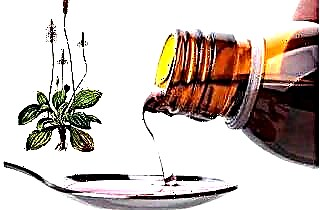 Onion juice with honey. It has an anti-inflammatory and antibacterial effect, helps to quickly stop a runny nose, and is harmful to most microbes. If the mucous membranes are very inflamed, and the mixture is very baking, you can dilute it a little with water.
Onion juice with honey. It has an anti-inflammatory and antibacterial effect, helps to quickly stop a runny nose, and is harmful to most microbes. If the mucous membranes are very inflamed, and the mixture is very baking, you can dilute it a little with water.- Plantain juice. Relieves inflammation, promotes healing, moisturizes and repairs damaged mucous membranes. Dripping 5-6 drops 3-4 times a day, after rinsing the nose.
- Potato juice. One of the best folk remedies that quickly relieve swelling and dry out the mucous membranes, the action is similar to vasoconstrictor drops.
- Coniferous oils are considered to be the best remedy for all respiratory ailments. You cannot drip them in their pure form, only dilute them with the base (olive, sunflower, etc.) in a ratio of about 1:10.
- Healing turundas. These are a kind of compresses that are injected into the nasal cavity for 15-20 minutes. They are used at the stage when the runny nose is no longer too strong. Gauze turundas can be impregnated with strong decoctions of herbs (chamomile, calendula, sage, St. John's wort) or oils (sea buckthorn, chlorophyllipt solution, pink).
- Inhalation. Steam inhalation perfectly relieves swelling, facilitates breathing, and promotes the discharge of mucus. A good effect is given by soda inhalations or with decoctions of eucalyptus, pine needles, rosemary, thyme. After the procedure, there is usually a profuse discharge of snot and mucus. This is normal, you just need to constantly cleanse your nose, and after about half an hour, it is advisable to rinse it with warm water.
- Warming up. Warming up helps to activate blood circulation, help get rid of edema and accelerate the processes of cell and tissue regeneration. You can warm your nose with a blue lamp, volcanic stones, a bag of salt, and even water bottles wrapped in a cloth. The main thing is that the temperature is pleasant, and there is no pus in the sinuses. After warming up, you need to lie down for at least half an hour and it is advisable not to go outside.
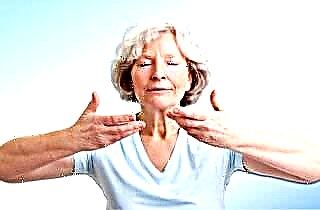 Breathing exercises. Nowadays, various types of breathing exercises are gaining more and more popularity. We do not recommend performing them in the acute stage of catarrhal rhinosinusitis. But as a means of prevention and in the final stage of the disease, they are very good.
Breathing exercises. Nowadays, various types of breathing exercises are gaining more and more popularity. We do not recommend performing them in the acute stage of catarrhal rhinosinusitis. But as a means of prevention and in the final stage of the disease, they are very good.
By and large, all methods of treating rhinosinusitis are suitable, because the main thing here is not to start the disease and prevent it from becoming chronic or provoke complications. Therefore, it is highly desirable that outpatient treatment, even with folk remedies, be carried out under the supervision of the attending physician. This will instill confidence in positive dynamics and will allow you to adjust the process in time, if necessary.

 a sharp decrease in performance, weakness;
a sharp decrease in performance, weakness; The most effective remedy against catarrhal rhinosinusitis are the antiviral drugs Anaferon, Nazoferon, Amizon, Amantadin and others. But they have one big drawback: they only work in the first 48 hours after the onset of symptoms. Further, their use is useless, therefore, such funds should always be at hand in a home first-aid kit and used at the first sign of ARVI.
The most effective remedy against catarrhal rhinosinusitis are the antiviral drugs Anaferon, Nazoferon, Amizon, Amantadin and others. But they have one big drawback: they only work in the first 48 hours after the onset of symptoms. Further, their use is useless, therefore, such funds should always be at hand in a home first-aid kit and used at the first sign of ARVI. Onion juice with honey. It has an anti-inflammatory and antibacterial effect, helps to quickly stop a runny nose, and is harmful to most microbes. If the mucous membranes are very inflamed, and the mixture is very baking, you can dilute it a little with water.
Onion juice with honey. It has an anti-inflammatory and antibacterial effect, helps to quickly stop a runny nose, and is harmful to most microbes. If the mucous membranes are very inflamed, and the mixture is very baking, you can dilute it a little with water. Breathing exercises. Nowadays, various types of breathing exercises are gaining more and more popularity. We do not recommend performing them in the acute stage of catarrhal rhinosinusitis. But as a means of prevention and in the final stage of the disease, they are very good.
Breathing exercises. Nowadays, various types of breathing exercises are gaining more and more popularity. We do not recommend performing them in the acute stage of catarrhal rhinosinusitis. But as a means of prevention and in the final stage of the disease, they are very good.
